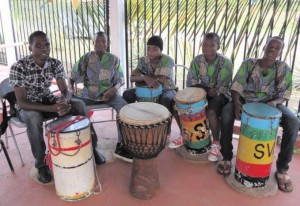Drumming in Guyana has been considered a dying art, but recently, many organisations have been collaborating to resuscitate an art form considered a vital part of Guyana’s cultural heritage.
The African Cultural and Development Association (ACDA) with a grant of G$1M from the Cultural Centre of the IDB in Washington D.C., is collaborating with the donor organisation to revive drumming in Guyana.
The drum is one of the central components of African culture, with Africans called the “Children of the Drum”. Africa is considered a “drum continent” because nowhere else in the world and on no other continent can there be found a larger diversity of drums.




